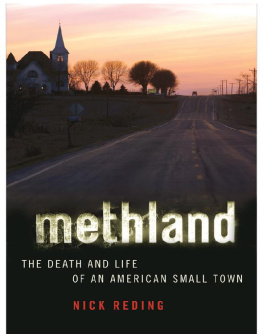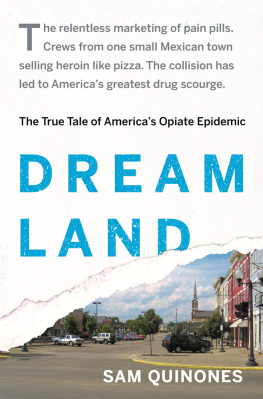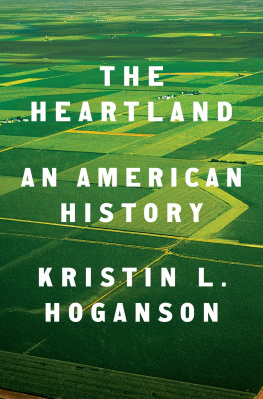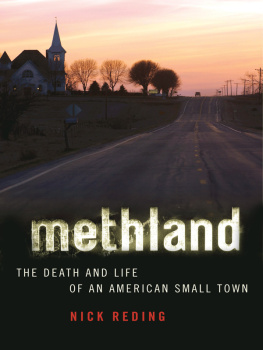METHLAND
By the Same Author
The Last Cowboys at the End of the World
METHLAND
THE DEATH AND LIFE OF AN
AMERICAN SMALL TOWN
NICK REDING

Copyright 2009 by Nick Reding
All rights reserved. No part of this book may be used or reproduced in any manner whatsoever without written permission from the publisher except in the case of brief quotations embodied in critical articles or reviews. For information address Bloomsbury USA, 175 Fifth Avenue, New York, NY 10010.
Published by Bloomsbury USA, New York
Some of the names in this book have been changed.
All of the events portrayed are completely factual.
All papers used by Bloomsbury USA are natural, recyclable products made from wood grown in well-managed forests. The manufacturing processes conform to the environmental regulations of the country of origin.
LIBRARY OF CONGRESS CATALOGING-IN-PUBLLICATION DATA
Reding, Nick.
Methland : the death and life of an American small town/Nick Reding.1st ed.
p. cm.
Includes bibliographical references.
eISBN: 978-1-60819-156-7
1. Methamphetamine abuseIowaOelwein.
2. MethamphetamineIowaOelwein. I. Title.
HV5831.I8R43 2009
362.29'9dc22
2008045398
First U.S. Edition 2009
1 3 5 7 9 10 8 6 4 2
Typeset by Westchester Book Group
Printed in the United States of America by Quebecor World Fairfield
To my wife and my son
For most of those which were great once are small today; and those which used to be small were great in my own time... Human prosperity never abides long in the same place.
Herodotus, The Histories
CONTENTS
A s you look down after takeoff from OHare International Airport, headed west for San Francisco, California, its only a few minutes before the intricate complexity of Chicagos suburban streets is overcome by the rolling swell of the prairie. The change is visceral as the planes shadow floats past houses hidden within protective moats of red cedar and evergreen shelter belts. The land unfolds a geometric sweep of corn and switchgrass. Grain elevators shine like tiny pieces in a diorama; next to them, venous brown-water creeks extend their fingers warily onto the negative space of the prairie. And if you look closely as the plane climbs past Mississippi Lock and Dam Number 10, on the Iowa side of the river, youll see a little town called Oelwein, population 6,772. Youll see, for a few ascendant moments, every street, every building, and every pickup truck in brittle, detailed relief. Briefly, you can look at this photographic image of a town, imagining the lives of the people there with voyeuris tic plea sure. And then Oelwein (along with your curiosity, perhaps) is gone.
Such is the reality of thousands of small communities dotting the twenty-eight landlocked states of the American flyover zone. Lying beneath some of the most traveled air routes in the world, they are part of, and yet seemingly estranged from, the rest of the country. In many ways, its easier to get from New York to Los Angeles, or from Dallas to Seattle, than it is to get from anywhere in America to Oelwein, Iowa. Yet much of what there is to know about the United States at the beginning of the new millennium is on display right there, gossiping at the Morning Perk caf, waiting for calls at Re/Max Realty, or seeing patients in the low brick building occupied by the Hallberg Family Practice. In their anonymity, and perhaps now more than ever, towns like Oelwein go a long way toward telling us who we are and how we fit into the world. Who we are may well surprise you.
Look again, then, this time from the window of a commuter flight from Chicago as it descends into Cedar Rapids, Iowa, on a clear May morning. Follow the gentle arc of I-380 north, over the Cedar River and past the red-and-white-checked logo of the Purina plant, which bathes everything for miles around in the sweet smell of breakfast cereal. What appears from the plane window to be only a few inches is really an hours drive to the junction of Highway 150, a no-nonsense two-laner that eschews the complexity of cloverleaf exits and overpasses. Every twenty miles or so, the speed limit drops from fifty-five to twenty-five as Highway 150 bisects another cluster of three-and four-story buildings bookended by redbrick churches and bright metallic water towers. The names of the towns are as companionable and familiar as the country is harsh: Bryantsburg, In dependence, and Hazleton accompany the road all the way to where the Amish homesteads sit kitty-corner from the Sportsmens Lounge. There, just across the Fayette County line, is Oelwein, pronounced OL-wine.
Like most small towns in Iowa, Oelweins four square miles are arranged on a grid system divided into quadrants. At what would be the intersection of the x and y axes is the central feature of Oelweins architecture and economy: the century-old Chicago Great Western roundhouse, where trains were once turned back north or south and where entire lines of railroad cars could be worked on without regard for the often-brutal weather outside. An enormous brick and steel structure the size of three football fields, the roundhouse, like the town it long supported, is the biggest thing for many miles. Amid the isolation, Oelweins very presence defines the notion of somewhere.
On the surface, Oelwein would appear to be typical in every way. Driving into town from the south, you first notice the softening profile of the maples and oaks that fill out the middle distance of an otherwise flat landscape. Once you are inside the city limits, Oelweins skyline is divided between the five-story white spire of the Sacred Heart Catholic Church and, six blocks farther north, the four-story red bell tower of Grace Methodist. Between them is a jewelry store, a sporting goods shop, two banks, a florist, a movie house, and four restaurants, all housed in turn-of-the-twentieth-century brick and stone buildings. Across the street from Las Flores Mexican Restaurant, theres a clothing boutique, a photography studio, and a crafts store. There are almost as many bars in Oelwein (eleven) as there are churches (thirteen). The biggest congregations are Lutheran and Catholic, owing to the two separate movements of immigrants into the county: Scandinavians and Bavarians at the end of the nineteenth century; Irish and Italians at the beginning of the twentieth. Von Tucks Bier Haus generally sees the high-end clientele, which is likely to stop in following a lasagna supper at Leos Italian Restaurant, the newest incarnation of a business that Frank Leo began as a grocery store in 1922, shortly after arriving from Italy. The Do Drop Inn, on the other hand, is Oelweins seediest and most eclectic watering hole. Run by Mildred Binstock, the Do Drop, as its known, is decorated in what Mildred terms High Amish Kitsch, a smorgasbord of lace doilies, mismatched wooden chairs, and all manner of antique farm equipment washed in the harsh reds and soft greens of year-round Christmas lights.
Heading south on Main Street, back toward Hazleton, youll find a Dollar General, a Kmart, and a Kum and Go gas station. For the most part, though, things in Oelwein are still owned by the same families that have owned them forever. There is no Starbucks, and there are no plans for one. This is not a town that thrives on fanfare. Luxury is not a word that comes to mind inside either of Oelweins clothing stores, VGs and Sams, where wool dominates the fabrics of the mens suits and the ladies dresses alike. Practical, on the other hand, is a word that applies at nearly every turn. Even the photography studio, despite its large picture window full of high school vanity shots, has a decidedly utilitarian feel, owing in part to the long shadow cast by the wide aluminum awninga necessary ac-coutrement in an area of the Midwest that sees three feet of rain and five feet of snow in a normal year.
Next page


![Reding - Grads Guide to Graduate Admissions Essays] : Examples from Real Students Who Got into Top Schools](/uploads/posts/book/101661/thumbs/reding-grad-s-guide-to-graduate-admissions.jpg)









